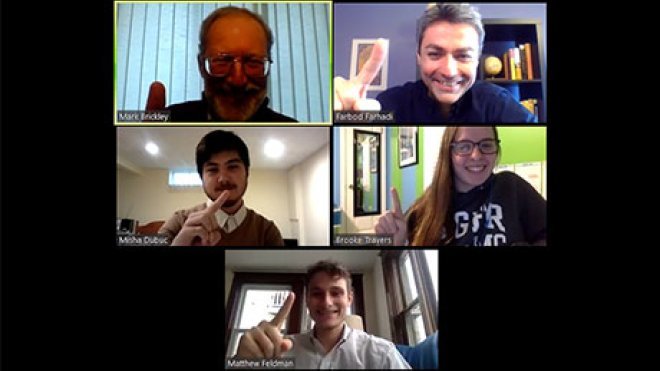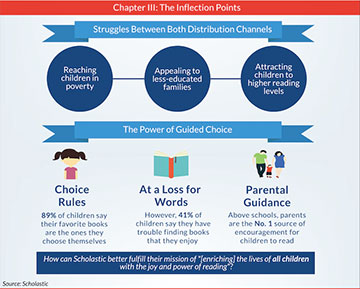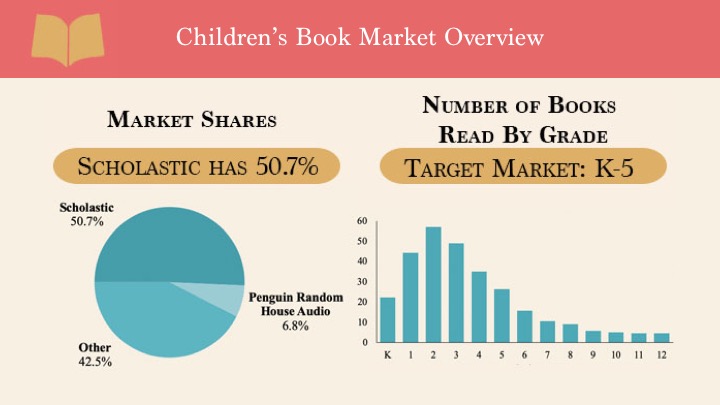RWU Students Sweep First and Second Place in National Analytics Challenge
Pivoting quickly to adapt to a different competitive format due to the coronavirus pandemic, the students claimed both top spots with outstanding analyses, recommendations and presentations

Offering data-based market insights that ranged from practical ways to increase sales to disrupting the current business model in the children’s book industry, Roger Williams University students swept first and second place at the Association for Information Systems’ (AIS) national collegiate analytics challenge.
As two teams from the Mario J. Gabelli School of Business, Matthew Feldman and Misha Dubuc earned first place and Brooke Travers, Madison Young and Hannah Denette took home second place in the data analytics category of the AIS Scholastic Analytics Challenge on March 27. Although they had been preparing to pitch their presentations in-person to the judges, when the finalist round shifted from taking place at Illinois State University to Zoom video conferencing because of public health measures enacted for the coronavirus pandemic, the students pivoted quickly to adapt to the new competitive format and came out on top.
Their wins build upon the strong showing from RWU Analytics Team members, who have placed among the top three spots in the national competition for several years.
“Winning data analysis first and second place is a major sweep for our teams. They had the whole package – great analysis and outstanding recommendations,” said Assistant Professor of Business Management Farbod Farhadi, who helped guide the teams along with Professor Mark Brickley. “What is most important in this challenge is not just analyzing the data – the judges are also looking for the added value of recommendations for unifying strategies to apply to their business now or respond to changes the students predict will come in the future.”
Generations of schoolchildren fondly remember the excitement they felt entering a classroom that’s been transformed into a Scholastic book fair or the joy of choosing the next story from a Scholastic book club that would transport them to another world. In this year’s competition, students were challenged to evaluate the century-old, multinational publishing company’s presence in the children’s book market and forecast what the future of the industry will bring.

The team that captured the top spot in the competition presented a plan to pivot Scholastic into the subscription service, much like Netflix and other popular entertainment giants have successfully implemented. Calling it “Bring the Library Home,” they claimed their strategy would help reach a new customer base and make books more accessible to a wider audience. Although they had already devised this strategy, their point was brought home by the way the recent coronavirus pandemic has upended many business models, including Scholastic which relies on book fairs and book clubs to reach their market.
“The music and video industries both disrupted their markets through subscription services. So, we thought, instead of going to the library it would be in the best interest of families to purchase a subscription service,” said Matthew Feldman, a senior economics and finance double major from Duxbury, Mass. “Coronavirus helped us in a way because, right now, their main distribution channels are obsolete. They’re probably racing to find a way to sell books to people. It’s an opportune time for them to launch a subscription service.”
Taking a different approach, the other team delved into the data on Scholastic’s distribution channels and presented a number of recommendations to improve sales performance for the company. Their ideas ranged from creating culturally distinct incentive programs for each region of the U.S. market to digitizing the book club catalog to make it more efficient for teachers to collect and order their students’ book selections.

While they had solid business strategies to offer, one of the ways that the second-place team stood out was their polished, professional presentation – which wasn’t easy to do since they were all tuning in virtually from three different locations. Because of travel restrictions and quarantine measures in place from COVID-19, the students faced the additional challenges of making a collaborative presentation feel seamless from different webcam feeds.
“Fortunately, we had already made a plan and split up who was presenting which section. For the Q&A, we decided that if a question was about the section we talked about, that person would answer first and then someone else could add something,” said Brooke Travers, a junior marketing major with minors in business analytics and graphic design from Longmeadow, Mass. “That helped us not talk over each other and the constant practice ahead of time helped us to be cohesive during the presentation.”
For Feldman, who serves as president of the RWU Analytics Club, the teams’ sweep of both first place and second place was a sweet victory following last year’s competition where the students didn’t place among the top third as they had been doing in past years.
“We worked around clock and this shows that if you work hard and get creative, you can lose one year and come back and win the whole thing next year,” Feldman said.